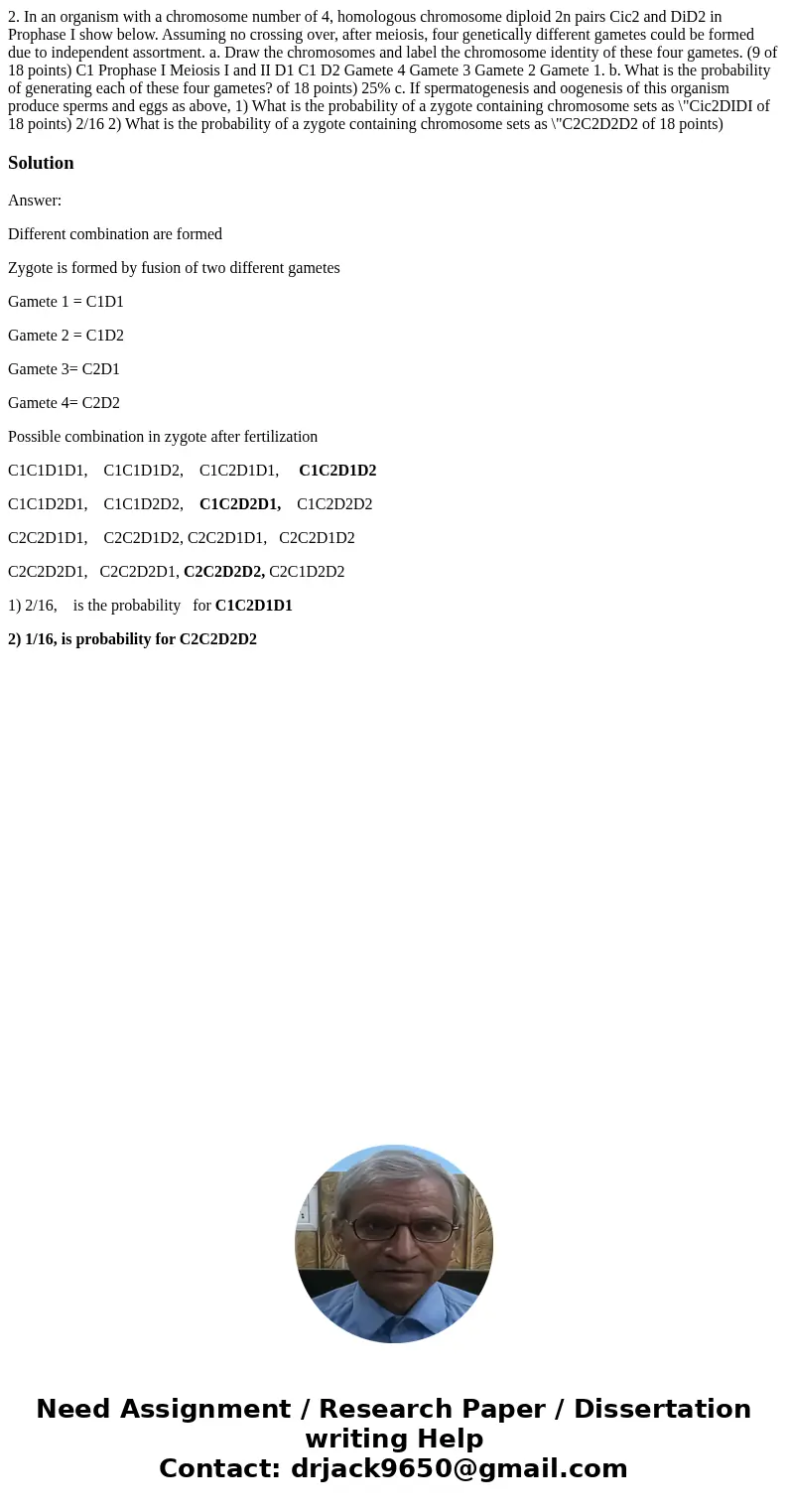2 In an organism with a chromosome number of 4 homologous ch
2. In an organism with a chromosome number of 4, homologous chromosome diploid 2n pairs Cic2 and DiD2 in Prophase I show below. Assuming no crossing over, after meiosis, four genetically different gametes could be formed due to independent assortment. a. Draw the chromosomes and label the chromosome identity of these four gametes. (9 of 18 points) C1 Prophase I Meiosis I and II D1 C1 D2 Gamete 4 Gamete 3 Gamete 2 Gamete 1. b. What is the probability of generating each of these four gametes? of 18 points) 25% c. If spermatogenesis and oogenesis of this organism produce sperms and eggs as above, 1) What is the probability of a zygote containing chromosome sets as \"Cic2DIDI of 18 points) 2/16 2) What is the probability of a zygote containing chromosome sets as \"C2C2D2D2 of 18 points) 
Solution
Answer:
Different combination are formed
Zygote is formed by fusion of two different gametes
Gamete 1 = C1D1
Gamete 2 = C1D2
Gamete 3= C2D1
Gamete 4= C2D2
Possible combination in zygote after fertilization
C1C1D1D1, C1C1D1D2, C1C2D1D1, C1C2D1D2
C1C1D2D1, C1C1D2D2, C1C2D2D1, C1C2D2D2
C2C2D1D1, C2C2D1D2, C2C2D1D1, C2C2D1D2
C2C2D2D1, C2C2D2D1, C2C2D2D2, C2C1D2D2
1) 2/16, is the probability for C1C2D1D1
2) 1/16, is probability for C2C2D2D2

 Homework Sourse
Homework Sourse